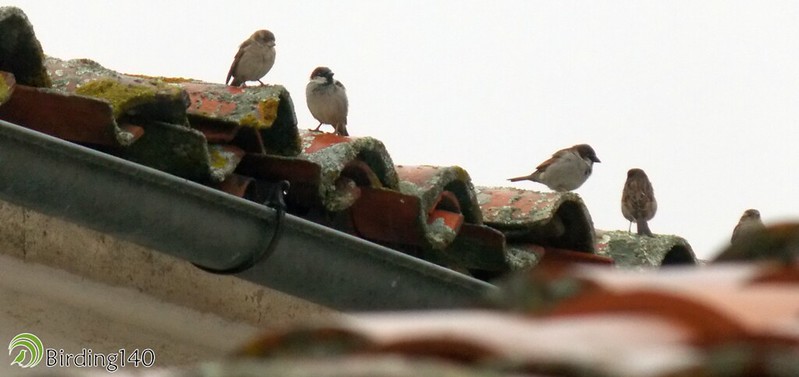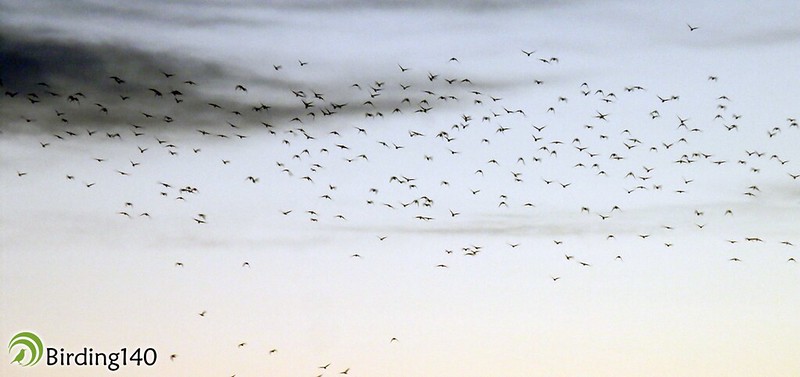Birds and humans have lived together since the Stone Age. Most of them, like the sparrow, the Common House Martin or the kestrel, see the facades of our buildings as an artificial cliff to set their nests. Some of them, like the House Sparrow, are happy with a cavity on the wall or a space under a tile just several meters in height, whereas others, like the Common Kestrel, need a cavity at a few meters in height in a quiet rural area.
Cohabitation between neighbours has always been hard. For this reason, we are going to analyse the problems that may arise and the solutions we can adopt when we have a winged tenant in the house. We will also talk about the benefits of having these birds nearby.
The House Sparrow is one of the most common birds we can find in our homes. They set their nests in land and city buildings all year long, especially in roof cavities and walls, although during the last years they have decreased in number in the cities for different reasons. The House Sparrow is a noisy bird. In order to avoid disturbances, we will set nesting boxes with holes of 4 cm in diameter in places where they won’t disturb us. We shouldn’t use insecticides, so the sparrow chicks have enough food.
The Black Redstart is another tiny bird that loves our company. It inhabits building facades, both in the land and in the city, during spring and summer. It nests in holes in walls, beams and cornices. The Black Redstart settles in places that have green spaces available, hardly disturbing humans. In order to enjoy these little birds we need to set a semi-open nesting box at about 2-5 metres in height on a wall looking south-east.
The martin, the swallow and the swift come to our houses with good weather. The Common House Martin nests in facades of towns and villages. They come during spring and summer forming colonies, and the only disturbance they can cause is the dirt of their excrements. We can solve this problem by setting a board about 50 cm under the nest, and cleaning it every autumn.
The Barn Swallow sets its nest in garages and corbels, both in the city and in the countryside. Its period coincides with the Common House Martin’s, and we can also solve the dirt problem with a board. We will set it after the birth of the young, and we will take it out when the swallows leave. If we don’t do so, we take the risk that they won’t occupy the nest the following year. Setting a board or some nails on the facade wall can encourage them to build the nest.
The Common Swift has also preference for our houses in order to set its own. It sets its nest in facades and in the lower part of the roofs. Its period is between early spring and late autumn. The Common Swift doesn’t get the facades dirty, and the destruction of its occupied nests is prohibited, so construction works on the facades with an occupied nest must be done during autumn or winter. Nesting boxes should be at least at 5 metres from the ground, bearing in mind that they need a hole of 6 cm wide and 3 cm high to start the flight.
The Common Starling is another inhabitant of our homes. It nests in buildings in rural and urban areas in a period between spring and summer. For the nest it uses a cavity on the wall, a space under a tile or a false ceiling. Although they are very beneficial due to the large consumption of insects during the breeding season, they are extremely noisy! For this reason, when we set the nesting boxes, we should do it in walls where the noise won’t disturb us. Nesting boxes should have an access hole of 5 cm in diameter. During winter, the gatherings of these birds are so crowded the city councils need to use sonic repeller devices or birds of prey in order to dispel them.
The European Green Woodpecker appears during spring in the shutters of land houses. These birds need some wood to make the pattering of their bucks reverberate. As a consequence of the dead tree felling carried out in the forests, European Green Woodpeckers don’t find adequate woods to do their pattering, so they do it in beams, roof overhangs and shutters in country houses instead. The solution to this problem is setting a big wooden box that acts as a sounding board in the place of the attack.
Doves also inhabit roofs and facades of cities all year long. The problem is caused by the excrements, which damage buildings, statues, cars, etc. To prevent them from perching in given places some efficient but anaesthetic systems have been created, like metal or plastic sharp spokes, nets, spokes with a spring, tight cables or electric systems that send out noises that are unpleasant for them. A similar case is the Herring Gull, which nests on the roofs of city buildings. The problems it causes are the dirt of its excrements, the noisy yelling and the tearing of trash bags. Some city councils use birds of prey in order to redirect them to the cliffs, which is the natural environment of the species. Other solutions are the use of sharp spokes and locked trash bags to prevent them from being opened.
To the jackdaw it is also attractive to live with us. We can find all year long it in big dimension buildings, in the countryside and in the city. It can provoke a clogging in chimneys and cooling towers when nesting in them. This issue can be solved with grilles that prevent them from entering.
The Barn Owl has a weakness for attics and bell towers. Not only is it an ally against rodents, but it can also be used to chase away the doves by placing nesting boxes in strategic points.
The Common Kestrel is the last of our possible tenants. This bird of prey prefers towers and high and quiet bell towers, but it doesn’t dismiss factory chimneys, blind facades and residential towers. Kestrel nesting boxes should be situated at least at 12 or 15 metres above the ground, although heights of 40 metres are preferable. The only damages it causes are excrement trails on the walls. If we want to restore a building or its facade, we shouldn’t start before the young have abandoned the nest, more or less around mid-summer.
As we have seen, to cohabit with our winged neighbours can cause some conflicts. However, with the appropriate measures, the benefits of coexistence are bigger than the prejudices it might cause us.
If you have enjoyed this post please share it on your social networks.














